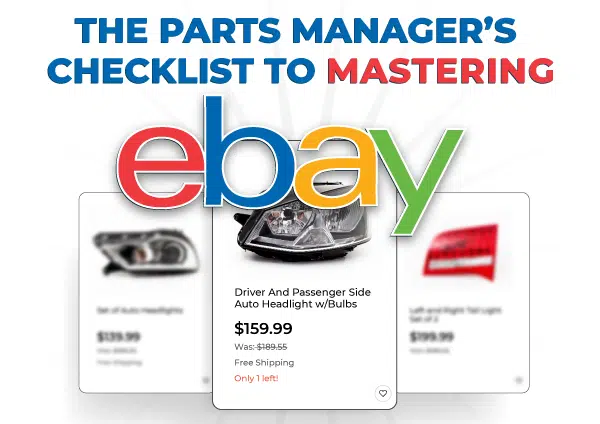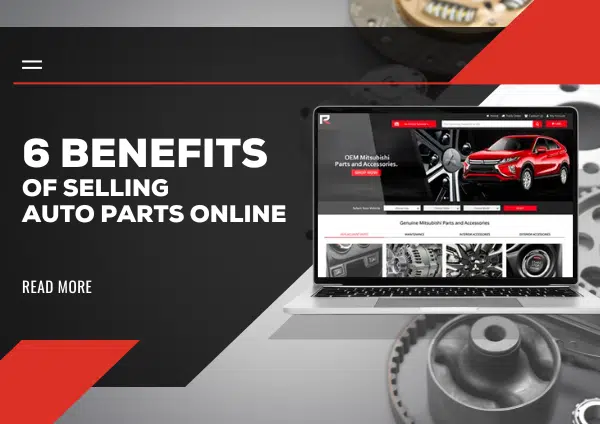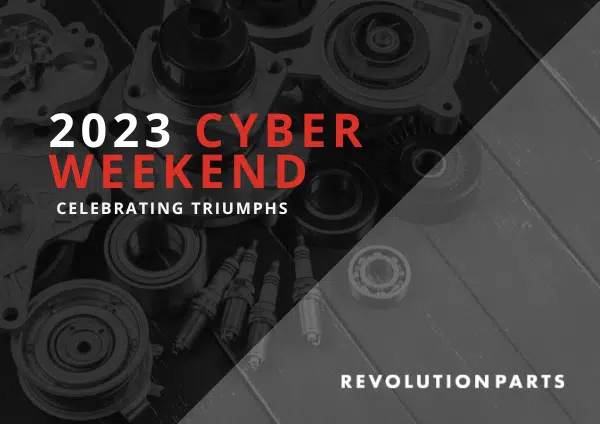If you want to increase the rate at which dealers are adopting your parts program, you need to first understand their objections and how creating the right parts program can help you overcome them.
If you talk to most dealers about why they’re not adopting an OEM parts program, they will tell you:
- “I just don’t see the value in it.”
- “It will take too much time and too many resources.”
- “I don’t want to mess with our current processes.”
Dealers Don’t See the Value
Online shopping is growing rapidly. Over the past year, more than 30% of all retail was done online, including sales in auto parts and accessories. More people than ever are researching and shopping online for car parts, and fewer are making their way into the dealership to make their purchase.
Digital retailing is not the way parts and accessories have traditionally been sold, and seasoned parts managers may not see the benefit of investing in eCommerce.
Other dealers may not be aware of just how large this online market is or understand how to reach it, so they don’t put a lot of effort into it. They don’t realize that they could potentially be missing out on millions of dollars in revenue. After all, parts eCommerce is a $16 billion business.
If you want to get more dealers to adopt your OEM parts program, you need to help them understand the value of your program and the real potential of their parts department. Show your dealers these hard facts:
Dealers Don’t See the Value
Online shopping is growing rapidly. Over the past year, more than 30% of all retail was done online, including sales in auto parts and accessories. More people than ever are researching and shopping online for car parts, and fewer are making their way into the dealership to make their purchase.
Digital retailing is not the way parts and accessories have traditionally been sold, and seasoned parts managers may not see the benefit of investing in eCommerce.
Other dealers may not be aware of just how large this online market is or understand how to reach it, so they don’t put a lot of effort into it. They don’t realize that they could potentially be missing out on millions of dollars in revenue. After all, parts eCommerce is a $16 billion business.
If you want to get more dealers to adopt your OEM parts program, you need to help them understand the value of your program and the real potential of their parts department. Show your dealers these hard facts:
- The market for online part and accessory sales is a $16B+ business annually.
- Parts eCommerce has grown 30% in the past year alone and this growth is expected to continue.
- Dealers selling parts and accessories online through RevolutionParts, for example, make $30k+ per month on average.
Making the Switch is Unmanageable
Times are changing, and every year technology becomes more and more advanced. The automotive industry is not immune to this change, and if dealers are not evolving with it, they may be left behind.
Just as consumers are expecting increased technological advancement with the vehicles they drive, they also expect the same progression in the way they shop – and the future of shopping is moving online.
Many parts departments are new to eCommerce and are comfortable with what they already know, but that doesn’t mean it is the best solution.
Making a shift in the parts department to a more advanced program can be intimidating for parts managers who may not be jumping at the chance to shake things up. This fear can cause dealers to put up their own roadblocks, as they imagine the time and resources it is going to take to learn and implement new technologies.
With the right eCommerce parts program, dealers should be able to implement your program without exacerbating resource constraints. This includes creating a program with:
- Turnkey ability to get their parts online
- Simplified order management
- Intuitive sales performance reporting
- Same-Day Delivery options
- Access to training and 24/7 support
It Could Be Risky to Existing Workflow & Processes
Every dealership already has procedures set up to get the work done. Of course, this doesn’t mean these processes can’t be improved upon, and that is what an OEM parts program should do.
One fear about adopting an OEM parts program is that it will disrupt the current process that has been established, and this will create more chaos for the employees and a larger workload.
Your parts program needs to do just the opposite. It should reduce the workload for employees and streamline processes. The work in the parts department should become easier and more efficient, even as the dealership begins to increase its online sales.
There is also the fear that implementing a new program won’t work and will result in a decrease in revenue. That being said, you’ll need to be able to demonstrate to dealers that the program you select has a proven track record for success.
If you want to convince more dealerships to adopt your OEM parts program, you need to be able to point to real-life examples of increased sales, revenue, and absorption rates that other dealers have achieved using the program. Build confidence amongst your dealers that they too can have the same success if they only follow the guidelines and support provided by your parts program.
Bottom Line
If you want to convince more dealers to take advantage of your OEM parts program, you need to be able to satisfy these three primary objections with real solutions. To do this, you must be able to encourage dealers that your program is going to boost revenue, be easy to implement, learn and use, and make their work easier and more efficient.
RevolutionParts partners with manufacturers to create branded parts commerce programs to help dealerships step into the modern age of digital retailing, transforming the way OEM parts buyers and sellers connect. Our parts programs simplify the parts selling process, from end-to-end to make it easy for dealers to reach new customers and manage their parts eCommerce programs efficiently.
Contact us today to schedule a free consultation and learn how RevolutionParts can help you modernize more dealers






